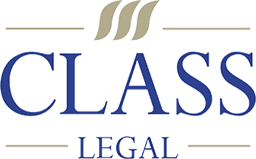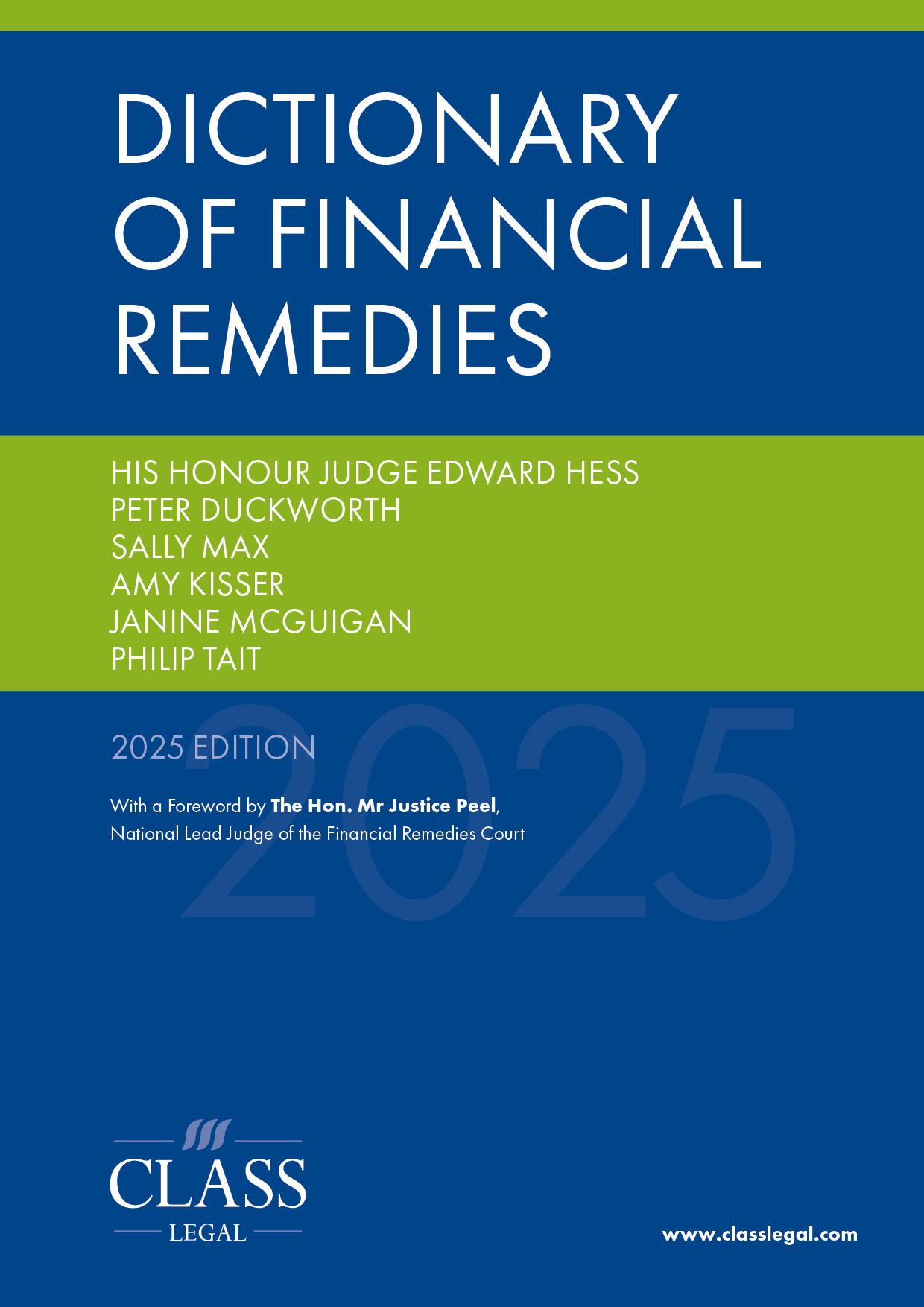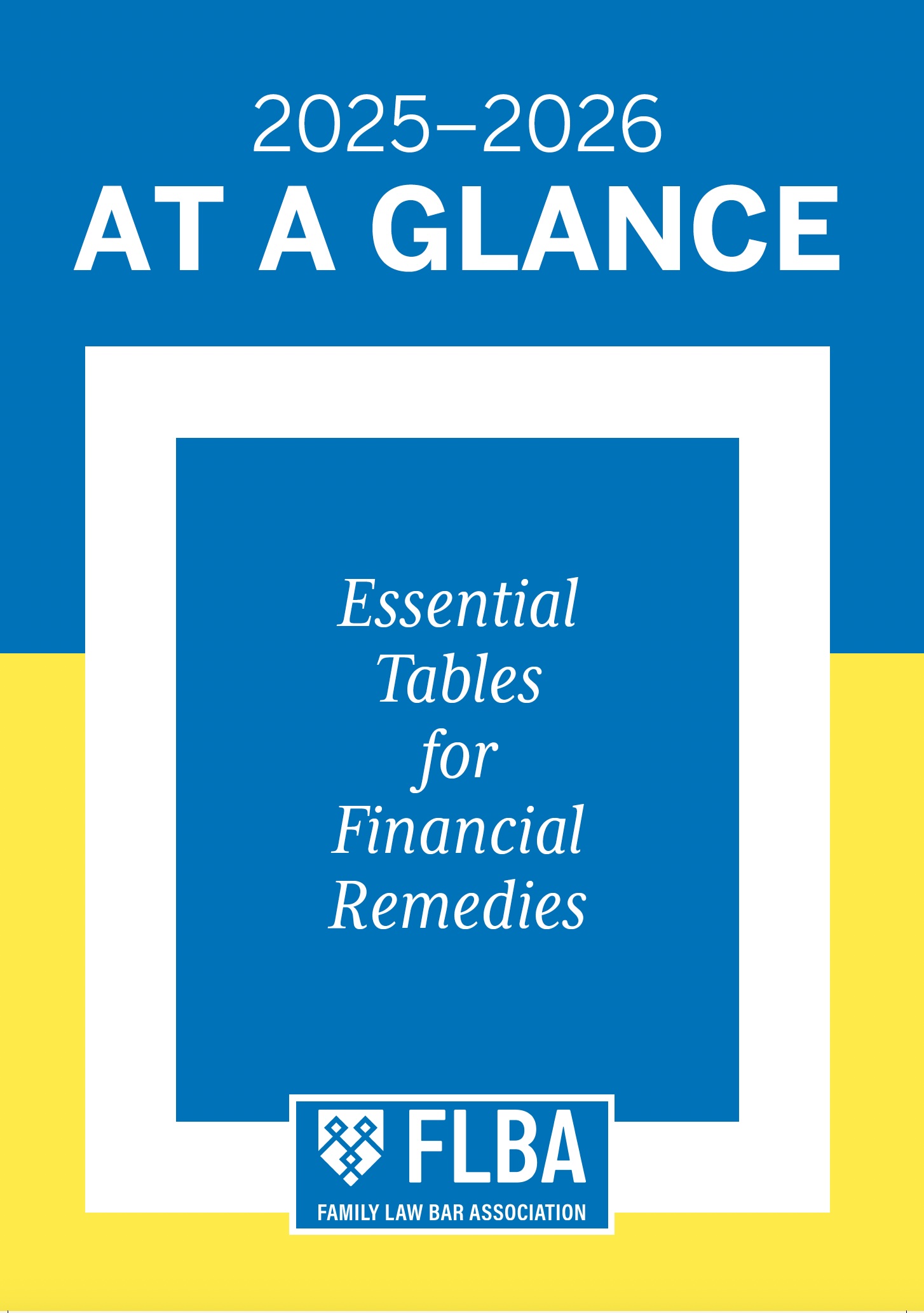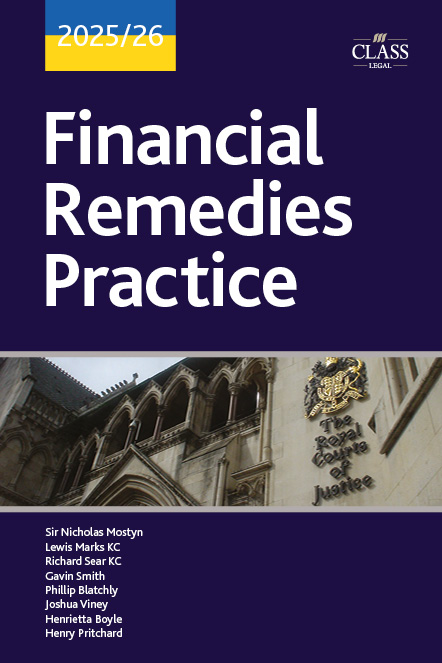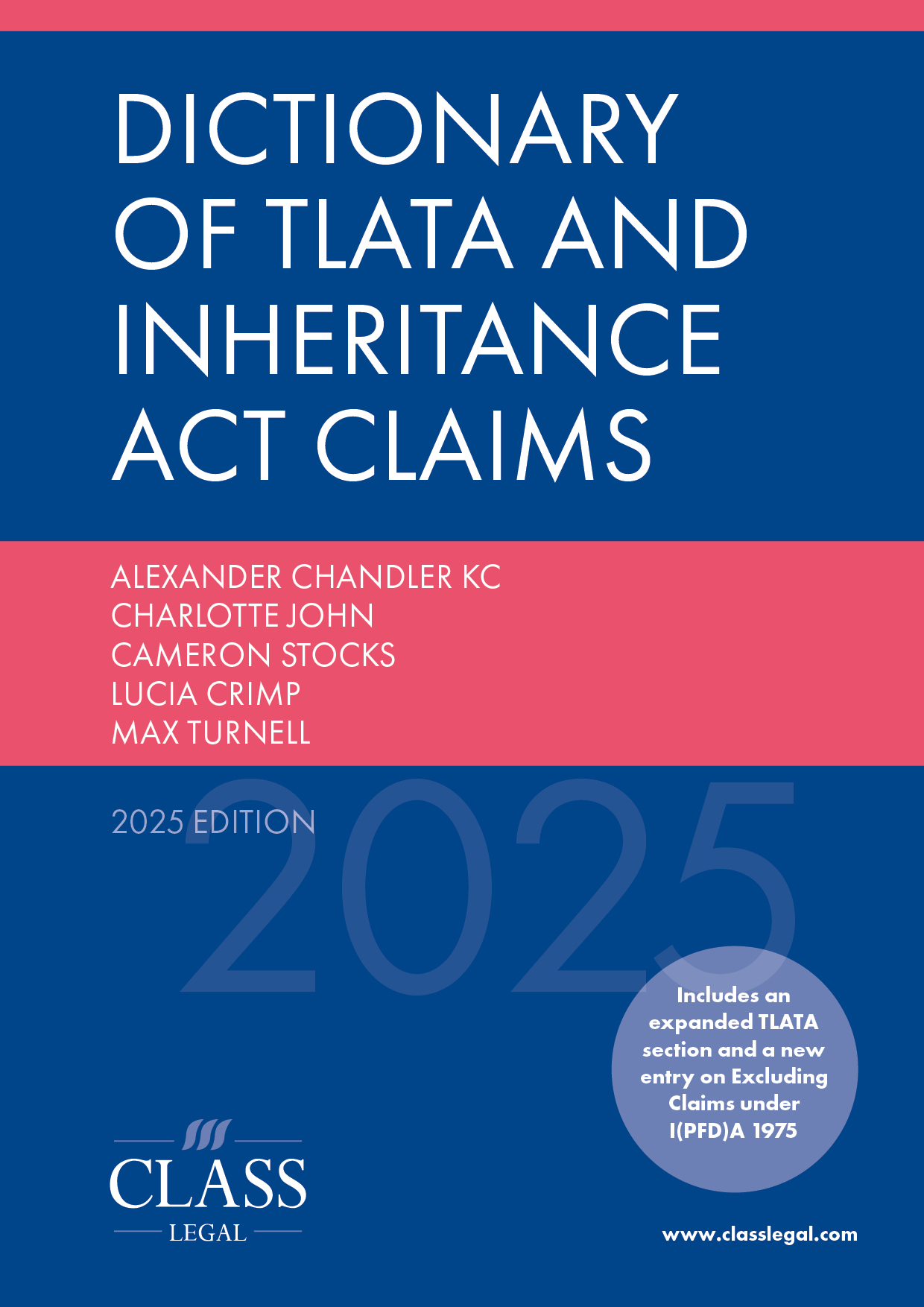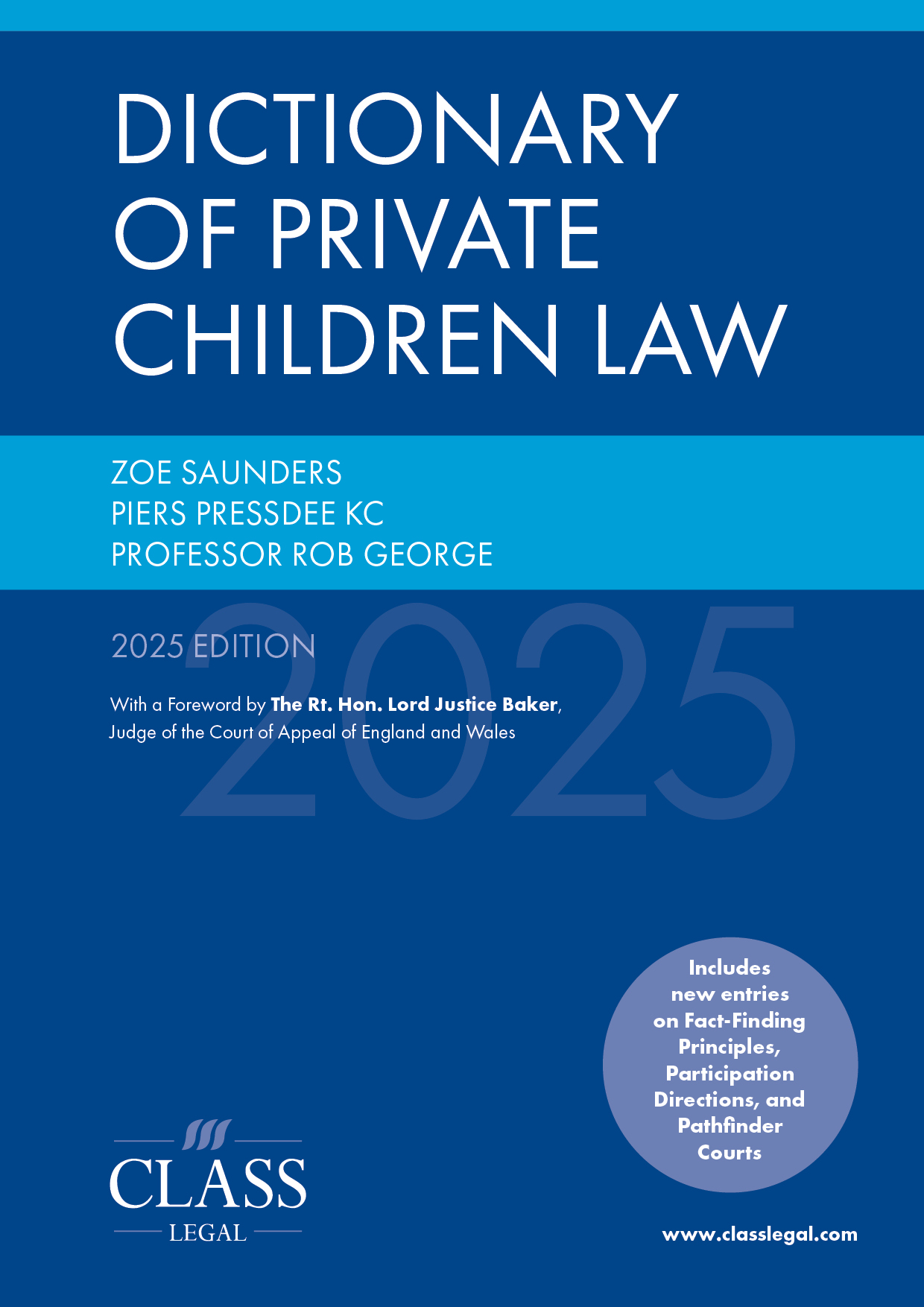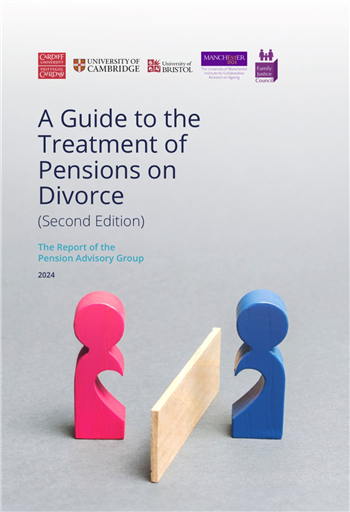
Standardising Financial Disclosure for Out-of-Court Resolution: Can We Trust the D81?
Published: 18/03/2025 06:00

The principal forms we use for capturing financial data were drafted by different groups of people, at different times and with different purposes: and it shows.
As technology and non-court dispute resolution (NCDR) continue expanding, now might be the time to consider if these forms are, first, fit for purpose and, secondly, whether they can be standardised to talk to one another.
Has the revised D81 been primarily redesigned to harvest outcome data to train AI programs? Its first focus should be to provide clarity for those who complete it and give sufficient information to the district judges considering the merits of a proposed consent order.
The need for standardisation
Our financial remedy processes have largely been built up with the court model in mind. The solicitor or barrister presents their client’s case with spreadsheets of data and the judge crafts an order (now based on standard precedent clauses) at the end.
Yet this is now a minority practice. In 2021, the government consultation document considering compulsory mediation set out statistics showing that there were 48,666 applications for financial orders. Of those, only 12,438 were contested, meaning that around three-quarters of cases were finalised by sending a draft consent order to court, together with the ‘D81 Statement of information for a consent order in relation to a financial remedy’ (‘D81’).
Before the D81 stage, there are other forms being used that capture the same or similar data, but broken down into more detail. The court-based forms, Form E and ES2, are not compatible with the summary boxes required to be completed in D81. In addition, many solicitors and NCDR professionals use their own versions of an asset and income schedule, in Word or Excel format, or via separate programs.
There are problems with having so many ways of capturing financial data which are not aligned or compatible:
(1) In capturing certain information on a more detailed earlier form, will it all be included in the D81 (for good reason or by mistake)? It is possible that one D81, completed by a family law professional from their resources, could end up being different from a second, completed by another person using a different way of capturing financial information, yet on identical facts?
(2) Will the D81 accurately reflect the other, more detailed schedule, upon which the settlement is reached? This can create confusion and inefficiency, as the transfer of data from one to the other is not seamless. It can also lead to secondary disputes, which is particularly disappointing when the end is so near and may then result in parties filing separate D81s rather than a joint one.
(3) Does the D81 contain sufficient information for the judge to truly understand the circumstances? There has not, to my knowledge, been any complaint from the judiciary, but could that just be because the subject never comes up? Any measure that has the potential to reduce judicial time is worth looking at.
(4) We are all aware of how artificial intelligence (AI) is going to be involved in every area of our lives, like it or not. Even if a revised D81 was created partially with the capture of big data in mind, is it fit for that purpose? Are the handful of fields where asset types are added too crude for trying to provide a learning tool for how matters could be resolved in the future?
There are hints that the work of standardisation and capture of data may soon be picked up by the Online Procedure Rule Committee (OPRC). Its work straddles both the civil and family spheres. The minutes of its meeting on 11 November 2024, para 9, mention that part of the work of a subcommittee will be to look at the ‘pre-action space model (including financial remedies)’.
What will this involve? The FPRC has recently examined the non-court space, resulting in the changes to Part 3 rules which came into force in April 2024. It is speculation, but perhaps the OPRC will want to consider how to harvest outcome information, in order to later teach AI programs how to ‘solve’ financial remedy cases in the future. A less ‘brave new world’ ambition could be to ensure that the financial data captured for clients can seamlessly travel from a solicitor’s office to a mediator’s or arbitrator’s office, to a barrister’s chambers and to the judge who will consider the draft consent order. Perhaps it might also look at a unified tool to capture disclosure, with couples then free to choose a forum to negotiate thereafter.
Some aspects of that portability will undoubtedly delve into the world of technical IT compatibility. However that will not be possible, or at least made a lot harder, if there are variations in the formats and the way professionals present the data in the first place.
As an aside, there may be many of us wary about whether Mr and Mrs Blogs can sit down in front of a screen in a few years’ time, enter their data and be told, by the computer algorithm, how they should separate their assets. Maybe the algorithm would just be advisory, but of course where it lands would always favour one over the other, who would then want to stick to that and ‘not waste money’ getting proper tailored professional guidance and support.
However, AI is coming down the family law tracks. We just don’t yet know what form it will take and how many of our jobs will disappear. As trippy as this is, the tail can’t wag the dog. First and foremost we need to have data capture that helps couples to separate more easily and efficiently, preferably in the non-court space, where it is safe to do so. That should be the main priority in the quest for standardisation of data capture, with the need to feed and teach computers being very much a secondary factor.
How can the data be standardised?
The place to start to examine standardisation is at the end. Regardless of what route is taken to achieve a consent proposal, the end point in the process, at least for married couples and civil partners, is the same. The draft consent order is uploaded to court (or sent by post by the self-represented) along with the D81, which should set the scene adequately for why the proposal has been crafted and merits court approval.
So we must start with D81, as it exists now, and ask what changes are required to make it an exact summary of the tables completed in other formats that have been used whilst the negotiating stage is ongoing.
Focusing mainly on assets rather than income, the D81 asset table comprises a mere four category boxes which are:
A Property
B Other capital
D Liabilities
F&G Pensions and Pension Protection Fund (PPF) compensation (I have put these together as they are so similar and considered as one in Form E).
The missing letters from the list above just comprise the maths applied to those entries: C = A + B, E = C - D, and H = E + F&G.
Using D81 alone is therefore insufficient in the negotiating stage to provide good enough financial disclosure in anything other than the simplest cases. It is surprising that it is useful enough, without the other table that fed into it, for a district judge considering the consent application. The judge’s role, as Sir James Munby memorably put it in S v S [2014] EWHC 7 (Fam), is not to be a rubber stamp though not a detective, bloodhound or ferret either. So they need sufficient enough data to tread that middle ground. There is a huge contrast between what is supplied in D81 and what a judge sees at an FDR hearing: one might wonder if that makes their consent-approval role lean more in the direction of the rubber stamp than the bloodhound.
I would argue that D81 needs some expansion and clarification, but not a major overhaul. It must still remain a ‘top-level’ summary.
It should be a summary of another document: a single, unified, detailed financial schedule, which could be used across the various means of non-court resolution and different professional activities, even perhaps including litigation. We have standard consent order clauses, so why not a standard financial schedule that can be deployed in all contexts?
Such a document, which I have called a ‘comprehensive financial table’ could have a template which is as wide-ranging as it needs to be, just like the options of around 100 clauses to choose from for the consent order. ES2 is the obvious place to start: in fact it may need very little tweaking. In the example below, I have mocked up a table based on ES2, but merged with the standard D81 entries also.
Example of a comprehensive financial table
Just like the consent order, there will be the core, most frequently used parts and then the ‘exotic outliers’ that are used once in a blue moon (which I have not added to the example table). Like the consent order precedents, they would have to be freely available on, say, the gov.uk website and would no doubt be replicated with interactive versions that would be created for and by the market. Currently, Form E and D81 are owned by the Ministry of Justice (MOJ) and ES2 by HM Courts and Tribunals Service (HMCTS). The ownership of standardised documents will need to have just the one home.
This then streamlines the process for all concerned, making it easier to capture, compare and process financial data accurately. It may be that, initially and for those without representation, this data is manually re-entered onto the D81, but at least the information is the same and has a traceable root. In future, a couple of clicks on a program or an MOJ/HMCTS-curated online tool will enable the transfer of all the necessary data. It would thus make no difference if there were one professional filling in the comprehensive financial table and then another preparing the D81.
The current challenges with the D81
It is all very well having a merged ES2/D81 document which will be used before settlement is reached, but is the current D81 a good enough document, both for those completing it and then also for the judge?
The current incompatibility is itself a problem, with potential for arguments between solicitors and this problem also broadens out when there is more than one professional involved with the process. When parties are represented by solicitors and go through court-based negotiations, Form E (used in financial settlements) is typically completed by a solicitor, while ES2 could be completed by a solicitor or a barrister. When a case is resolved via NCDR the mediator, or other professional such as an arbitrator, would be likely to use their own financial schedule and then D81 is completed after that by a solicitor. A litigant in person may have to complete all these various forms and still stay sane.
Therefore, as mentioned earlier, there is a risk that D81 is completed in different ways by different people using different feeder forms. The four summary boxes are so ‘top line’ and lacking in clarity, that this inevitably invites confusion, inconsistencies and disputes.
Also, as mentioned previously, are those four asset boxes really enough information for a district judge? If data is entered on D81 in a different way from the schedules upon which a settlement was considered, then the net effect table will be a distortion of what the parties intended.
Even if D81 is not redrafted, it would help if a judge, who in looking at the documents considers that they need to know more, could request sight of the fully compatible comprehensive financial table that has fed into it. They could then have sight of the broken-down data that was summarised into D81, to understand the assets and liabilities more fully and beyond any explanations provided, particularly competing explanations, in the narrative paragraphs.
In looking at D81 and comparing it with ES2 in particular, there are examples of D81’s limitations and potential for inconsistency. The list below (which is not comprehensive) provides more granular reasons why standardisation would be useful:
Asset schedule
Joint assets
Most asset schedules, such as ES2, have a column for joint assets. D81 does not. It therefore requires a redrafting exercise so that joint assets are split 50:50, making the D81 table look different from the tables upon which the settlement was based. This oversimplification is not helpful and may cause confusion. It is almost always helpful to see clearly what assets are joint and what are held in a sole name.
Property valuation
ES2 asks for the property value after deducting the costs of the mortgage, costs of sale, early repayment penalties (ERP) and capital gains tax (CGT). However, D81 only asks for the property value ‘after deducting any mortgage’, leading to potentially inconsistent reporting. Some of the self-represented or others may, for example, leave out costs of sale in coming to the net valuation, whilst others include them. The ERP is irrelevant where a sale is very unlikely within that period, but of possible importance if not. It would be always dangerous to leave out CGT, where relevant. Yet D81 is silent on what makes up the ‘property value’ figure.
Chattels
Another issue is the treatment of chattels, or personal property, in D81. In the absence of being anywhere else, chattels must be listed under ‘Other Capital’, which only specifies ‘bank accounts, savings, and investments’.
Not all chattels are created equally. One party may have estimated that they own £50,000 worth of depreciating home contents and vehicles. Contrast that with a painting valued at £50,000 from an up-and-coming artist. There is also often a recognition that contents, jewellery and cars are primarily of functional use and cannot be compared with assets of similar value comprising ‘bank accounts, savings, and investments’.
There is therefore probably a wide inconsistency amongst professionals and possibly even from solicitors in the same case, as to whether certain chattels are included in the detailed asset schedule or left out. Even if added initially, they may be discounted subsequently and so not factored into the maths (including the net effect) that has led to the settlement.
Liabilities
Looking at the calculation boxes in the asset table, the liabilities are deducted from non-pension assets and thus will always be deducted from the pot of total net assets. Whilst that may be mathematically correct, the liabilities are rarely ‘owned’ in the same way as the assets. They are often not joint, or at least not jointly built up.
Even if the liabilities are of similar amounts between the couple, not all liabilities are created equally either: contrast a £50,000 personal loan to install a new kitchen with a £50,000 loan to fund an addiction.
It may be the practice of many, as it is mine, to have liabilities in a separate section to the main asset schedule, especially when looking at the net effect. I have done this in the example. There is then a conversation as to whether the liabilities should be factored into an overall settlement.
Do some people complete D81 leaving out some of the liabilities for that reason? If not, does a district judge question the departure from equality on the net effect table more often when there is a high level of personal debt on just one person’s side which may not have been explained?
In my view it would be more useful to have a secondary total on D81, which includes all the assets, including pension, but without liabilities. It would probably be more useful for big data capture also.
Income schedule
Pension contributions
The income table in D81 is more detailed than the asset table, especially as sources of income have less variation. Yet it does not indicate where or whether to deduct pension contributions from income. It seems unlikely that pension contributions would fall under ‘compulsory deductions’, yet, if not, they are left out entirely. Whilst perhaps not needed for the district judge, it is often essential that parties know how much disposable income they have available after their pension is deducted, at source or otherwise. This information is almost always in the detailed schedule that then feeds into D81.
Rental income
D81 does not specifically mention rental income, leaving it to be included under ‘other sources of income’, which may not be intuitive for all users. Again, this lack of clear guidance means that essential information could be left out or misrepresented.
Recommending good practice for regulated mediators
The work of mediators and other NCDR practitioners is almost always linked to involvement with other professionals. In the case of the increasingly popular solicitor-assisted or hybrid model, they work together at exactly the same time. If each professional used the same comprehensive financial table, which travels throughout the clients’ journey to settlement, this hugely reduces the chance of a proposal falling through the cracks.
Now may be the time for the mediation community to look in more detail at their financial remedy habits and practices in mediation. The profession has grown alongside the development of the forms and the standardisation of the consent order precedents. All mediators should have good knowledge of the standard orders, whether or not they offer a drafting service within their without prejudice outcome documents (to travel on afterwards for solicitors to approve). Getting consistency and rigour in the process of disclosure is a key factor, or the proposals will fail later down the line.
The mediation community has not yet had a conversation about whether there are better processes and practices than others in tackling the managing and capture of disclosure. Without being rigid or didactic, there could be good practice guidance on this, perhaps crafted by mediators who have the most experience and handled the most challenges. What comes out, perhaps even with varied opinions, could lead to a more efficient, transparent and accessible financial mediation process, particularly when it comes to the forms and financial schedules used.
If there was already a standardised comprehensive financial table that mediators could use alongside the consent order precedents, this would make this endeavour very much easier.
Conclusion
D81 suffers from inconsistencies and incompatibility with other forms like ES2, making data transfer inefficient. Standardisation could streamline the process, ensuring clarity and reducing confusion, disputes and the submission of separate D81s.
A unified comprehensive financial table which feeds into D81 could improve data accuracy and consistency and promote a better and clearer route to settlement.
D81 would benefit from being looked at again and revised, to ensure that the right information is captured in a clear way. This clarity may later have a secondary role in being better able to inform us of the big data patterns of settlement.
- Asset-Table.pdf111kb

